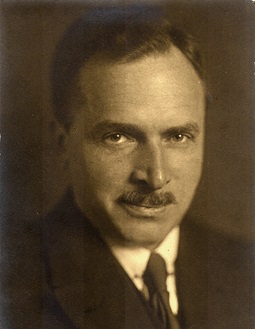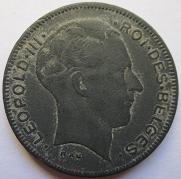Henri de Man facts for kids
Quick facts for kids
Hendrik de Man
|
|
|---|---|
 |
|
| President of the Belgian Labour Party | |
| In office 1938-1940 |
|
| Preceded by | Emile Vandervelde |
| Personal details | |
| Born | 17 November 1885 Antwerp, Belgium |
| Died | 20 June 1953 (aged 67) Greng, Switzerland |
| Political party | Belgian Labour Party |
| Occupation | Politician |
| Signature | |
Hendrik de Man (born November 17, 1885 – died June 20, 1953) was a Belgian politician. He was a leader of the Belgian Labour Party. De Man was an important thinker about socialism in his era. During World War II, he was involved in working with the German occupation of Belgium. This is known as collaboration.
Contents
Early Life and Career
Hendrik de Man was born in Antwerp, Belgium. He was active in socialist politics from a young age. During World War I, he fought with the Belgian army. He supported the Allied countries in the war.
After the war, he taught sociology at the University of Washington in the United States. Later, he started a school for workers' education in Belgium. He then moved to Germany. There, he taught at the University of Frankfurt. He had different ideas from many of his left-wing colleagues.
Political Views and Return to Belgium
De Man returned to Belgium after 1933. He became the Vice President of the Belgian Labour Party. In 1938, he became the party's president. From 1936 to 1938, he served as the Minister of Finance.
His ideas about socialism were quite different from others. He believed in "planisme", which means planning. This idea was very popular in the early 1930s. It suggested that the government should have more control over money and banks. This would help solve economic problems. However, it still wanted to keep parts of the capitalist system. De Man thought this approach would help the private sector. He also believed it would protect fair competition.
The "Plan de Man"
De Man created a plan known as 'Het Plan de Man'. Some people say this plan was meant to stop the rise of fascism in Belgium. However, many historians believe it showed his own move towards fascism. This became very clear when he worked with the Nazi occupation in 1940.
The "Plan de Man" was an example of his "planisme" ideas. Some compare it to Franklin Roosevelt's New Deal in the U.S. But others say it was very different. The New Deal was a safety net for people. De Man's plan, however, aimed to reduce the power of workers and their unions. It would give more power to business owners and the government.
Collaboration During World War II

Hendrik de Man was an advisor to King Leopold III of Belgium. He also advised the King's mother, Queen Elisabeth. De Man had lived in Germany for a long time. He believed Belgium should try to get along with Hitler's Germany. This was a policy called appeasement. He hoped it would save Belgium from another war like World War I.
After the Belgian army surrendered in 1940, de Man welcomed the German occupation. He saw it as a chance for Belgium to be neutral during the war. He told members of his party that the "collapse of a decrepit world" was a "deliverance" for workers.
He helped create a new trade union called the Unie van Hand- en Geestesarbeiders. This union aimed to bring together all workers. However, many socialists saw it as a fascist idea. They believed workers would have little control in this new "union." De Man also believed in limiting the freedom of the press.
For several months, de Man acted as the main leader of Belgium. He worked under the German generals. The actual Belgian ministers had left the country during the Battle of Belgium. But over time, both Belgian Nazi supporters and the German authorities began to distrust de Man. They stopped him from giving public speeches in 1941. Realizing he had lost influence, he left Belgium.
Exile and Later Life
After leaving Belgium, de Man lived in German-occupied Paris for some years. He later fled to a cottage in France as Allied troops advanced. After the war, he moved to Switzerland.
He was found guilty of treason in Belgium after the war. This judgment was made in absentia, meaning he was not present at the trial. He remained in Switzerland and could not return to Belgium.
His nephew, Paul de Man, became a famous literary expert in the United States. After Paul de Man's death, it was discovered that he had written articles for a newspaper that supported the German occupation. Some of these articles contained ideas against Jewish people. This led to a new look at Paul de Man's work. It also made people think about his relationship with Hendrik, who was like a father figure to him.
See also
 In Spanish: Henri de Man para niños
In Spanish: Henri de Man para niños

